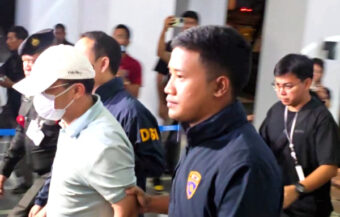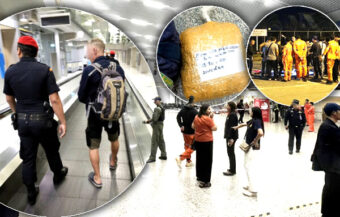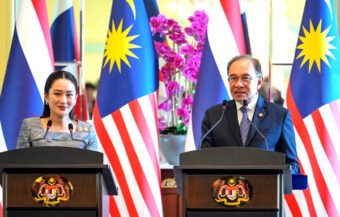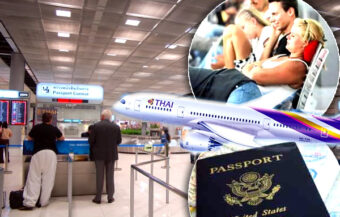Thai Airways files for bankruptcy at the Central bankruptcy court in Bangkok as 4 new heavyweight directors take their seats on the board. The firm is also reported to be pursuing a Chapter 11 bankruptcy filing in the United States with debts to foreign creditors appearing to be higher than initially anticipated being quoted on Wednesday at 70% of its outstanding liabilities.
Thai Airways moved with speed this week and applied for bankruptcy protection on Tuesday before a court in Bangkok. This was taken up expeditiously and on Wednesday a stay was put in place against all action by creditors against the firm in Thailand. On Friday last, the airline lost state enterprise status and Monday saw four new heavyweight directors appointed to the board as replacements for outgoing members as well as a nine-member committee of top officials established to represent the government. However, new figures emerging from the company now suggest an outstanding debt of ฿244 billion with up to 70% of creditors being outside the kingdom’s borders. It is expected that, shortly, the airline will also file for Chapter 11 bankruptcy in the United States.
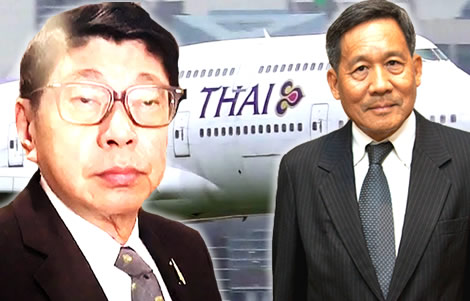
On Wednesday, the Central Bankruptcy court, after a short hiatus to finalise the paperwork, announced that the court had accepted a petition by Thai Airways to file for bankruptcy the day before.
The court has ordered that a notice be published in a daily newspaper and a second notice to that effect within 7 days. The announcement will also be made through online channels.
Written notice sent to all creditors
Written notice of the court’s decision will also be sent to all creditors of the airline on file.
They will still have several days to approach the court to appeal against this decision which sets in motion a restructuring process under Thailand’s 1940 Bankruptcy Act as amended after the 1997 financial crisis and in 2015.
Debts at the airline reported now at ฿244 billion
Reports from Wednesday suggest that the level of debt at the airline has now reached over ฿244 billion and that external creditors account for 70% of this figure.
These figures are a reversal or mirror image of figures quoted last week suggesting that only 30% of Thai Airways debt was held by foreign players.
Thai Airways now has protection from its creditors but in Thailand only where they can file petitions
The court’s decision on Wednesday prompted Thailand’s Deputy Prime Minister Wissanu Krea-ngam to point out that this meant that no creditor could act against Thai Airways International Pcl within Thailand.
He observed that they can only file debt repayment petitions with the court as part of the bankruptcy process.
Mr Wissanu saw the rehabilitation process taking approximately five years to complete with the Bankruptcy Court scheduling its first hearing on the case in August.
‘It will take about six months to submit a rehabilitation plan to the court. Then the rehabilitation process will take about five years,’ Mr Wissanu concluded.
Today’s move does not address foreign creditors in other jurisdictions where debts can be enforced
However, this still does not fully address the situation regarding Thai Airways outside of Thailand and international creditors.
In theory, debt collection procedures can still be applied in other jurisdictions. It is likely, however, that the airline’s management and senior officials are dealing with this situation.
Thai Airways filed for bankruptcy at the Central Bankruptcy Court on Tuesday and with a decision handed down on Wednesday by the court after organising the paperwork, that it would take up the case, the firm enters a three-month planning stage to prepare a rehabilitation plan for creditors and for the court to consider.
The move came sooner than most observers expected and indicates the urgency with which efforts to restructure and relaunch the former state enterprise is now being taken.
Reports on Tuesday suggests foreign debt at Thai Airways stands at 70% of amounts due
News reports early this week suggested that the level of debt in Thai Airways due to foreigners may be higher than the 30% reported last week.
On Tuesday, one Bangkok Post report suggested that the figure had risen to 49% while by Wednesday this figure was being quoted at 70%, a reversal of earlier reports.
This would comprise bank debt and lease payments.
These are reported to be banks in Germany and the United States while the firm, now in bankruptcy protection in Thailand only, still has mounting debts in outstanding airline lease payments reported last week at ฿46 billion.
Thai Airways is thought to be ready to file for a Chapter 11 bankruptcy process in the United States
There are also reports that the firm will file shortly in the United States for bankruptcy under a Chapter 11 process which is part of the US bankruptcy code.
This is considered necessary since any debts due outside of Thailand could result in aircraft being impounded or even offices or any other asset being the target for robust debt recovery efforts.
On Tuesday, it was reported that several representatives from foreign concerns were represented in Bangkok as bankruptcy proceedings in the kingdom were filed.
New nine-man committee of Thai officials to represent the government on rehabilitation efforts
On Monday, Thai Prime Minister Prayut Chan ocha, after reportedly having been given a list of names over the weekend, named a 9 member committee which will oversee the bankruptcy process on behalf of the government following Friday’s share sale to the Vayupak fund of a 3% shareholding which left Thai Airways stripped of its status as a state enterprise and also caused the dissolution of its main union.
Chaired by Deputy Prime Minister Wissanu, the government’s legal eagle with key officials on board
The new committee is chaired by Deputy Prime Minister and government legal eagle, Wissanu Krea-ngam.
It includes former Finance Minister Apisak Tantiworawong as well the permanent secretaries of the Ministries of Finance and Transport, Prasong Poontaneat and Chaiwat Thongkamkoon.
The committee will also attempt to facilitate the process of the reorganisation of the country’s flagship airline where government agencies are involved even though it is no longer a state enterprise.
Former CEO and business reformer, Piyasvasti Amranand, back after 12 years with a seat on the board
On Monday also, there was a profound change to the airline’s board which saw the return of the former President of the airline, 64-year-old Piyasvasti Amranand.
Mr Piyasvasti is a former Minister of Energy in Thailand and businessman with a proven track record. Specifically, in taking public firms and pursuing privatisation initiatives.
He has sat on the boards of leading Thai firms and is a former Chairman of Kasikorn Asset Management.
Mr Piyasvasti joined Thai Airways in 2009 and is credited with establishing Thai Smile, the low budget airline which is one of the few bright spots in the firm’s less than impressive business performance in the last few decades.
During his tenure, he implemented a programme to modernise the firm’s fleet and strengthen its finances.
However, he ran into difficulties with the board in 2012 over the acquisition of new aircraft and resigned.
Other heavyweights also take up position
He was joined on the Thai Airways board this week by Boontuck Wungcharoen, another Thai business heavyweight and former chief executive officer of TMB Bank.
The two other new directors announced were Tevin Wongwanich of PTT and Pirapan Salirathavibhanga, formerly a Democrat Party activist and advisor to Thai Prime Minister Prayut Chan ocha since December last year.
First goal is a survival plan that must be approved by a majority of creditors before being implemented
Assuming all goes smoothly in Thailand and the United States, an individual will be appointed by the courts to prepare the survival plan.
This will be a finely balanced business and financial proposal allowing enough relief for the company to emerge from its financial problems while also offering creditors some incentive to see the company regain a viable equilibrium whereby some return on monies owed can be achieved.
Any survival plan must be approved by a majority of creditors and then the court.
Once agreed, an administrator by the courts will be appointed to put the plan to work over 4 to 5 years
The next stage will then see an administrator appointed to carry out the plan and report to the court at regular intervals until the process is completed. This process could take 4 to 5 years.
However, the bankruptcy process facing Thai Airways is still fraught with enormous difficulties not least because of the international nature of the airline’s business and multi-jurisdictional aspect.
This could see the rehabilitation process quite easily running into some turbulence.
There is understood to be some goodwill towards the process by from a number of creditors as well as the ongoing support of the Thai government.
This could all change quickly when the matter is viewed strictly through the prism of potential profit and loss as details of any rehabilitation programme emerge.
The continued involvement of the Thai government as a significant shareholder may also prove to be a double-edged sword.
Even though the airline is no longer a state enterprise, many creditors may yet prove quite demanding as the process moves forward.
Current state and outlook for the airline industry may be a factor weighing on both sides of the scales
The current state of the airline industry will also be a major factor weighing on both sides of the scales in the minds of creditors particularly the foreign banks and aircraft leasing firms involved.
Failure to agree and fully accept a recovery plan would result in the airline being placed into liquidation. This would see the airline permanently closed with its assets sold off to repay the creditors.
The share price in the airline has been skittish.
It is actually up 76% since it hit rock bottom on the 21st of March last but since November, it is down by over 51%.
Over the past few decades, the airline’s share price has seen a steady deterioration in the order of 90% and a drop of over 85% since May 2013, seven years ago.
Further reading:
Australian man’s heartbreak cut off from his Thai wife – begs to be included on repatriation flights
Deputy Transport Minister calls talks with Thai Airways, seeks new business plan in 3 months
Microsoft accepts charges of corrupt payments in Thailand as it makes a deal with US investigators
Thailand recession fears as airline losses mount with lower tourist numbers and a strong baht

